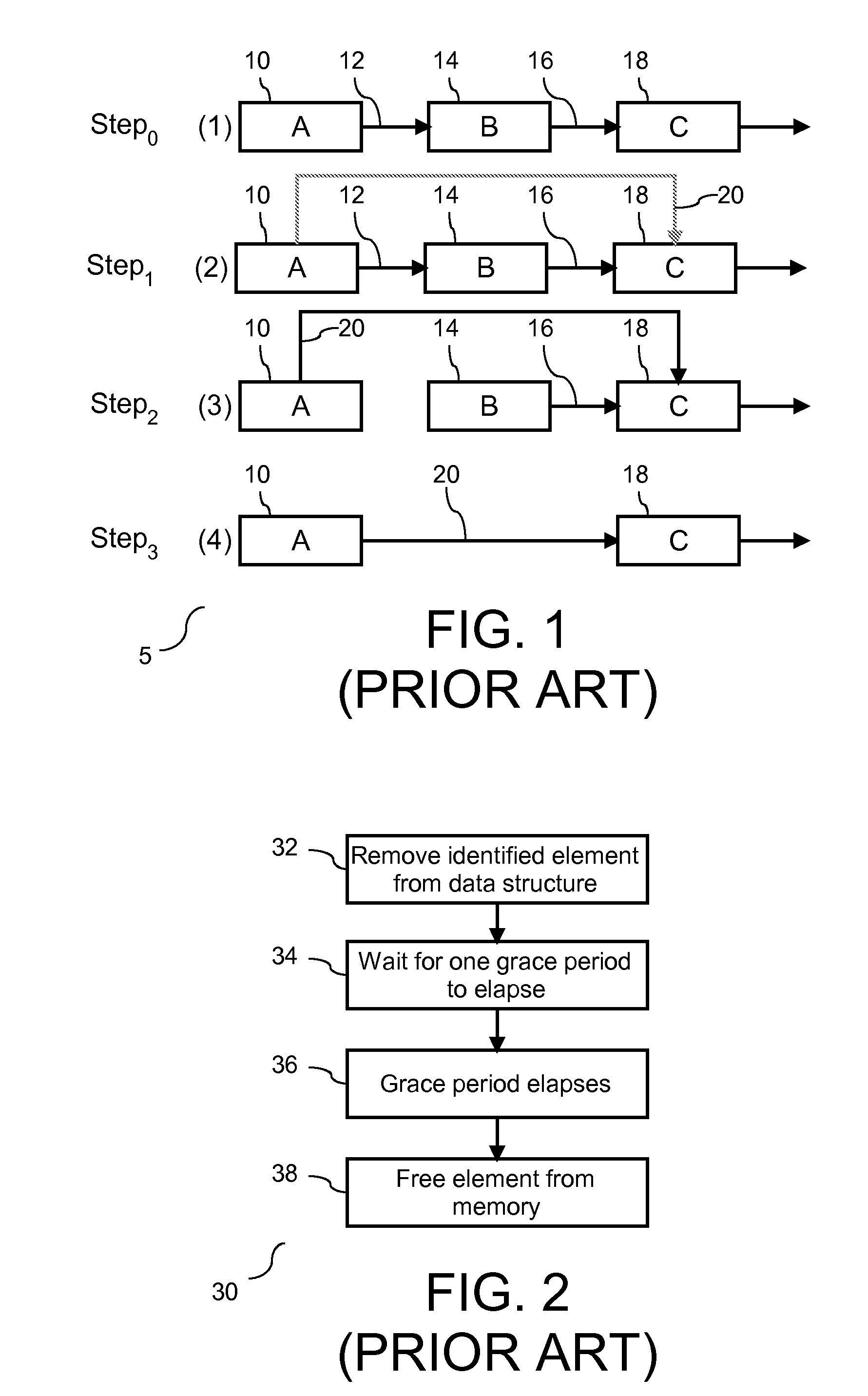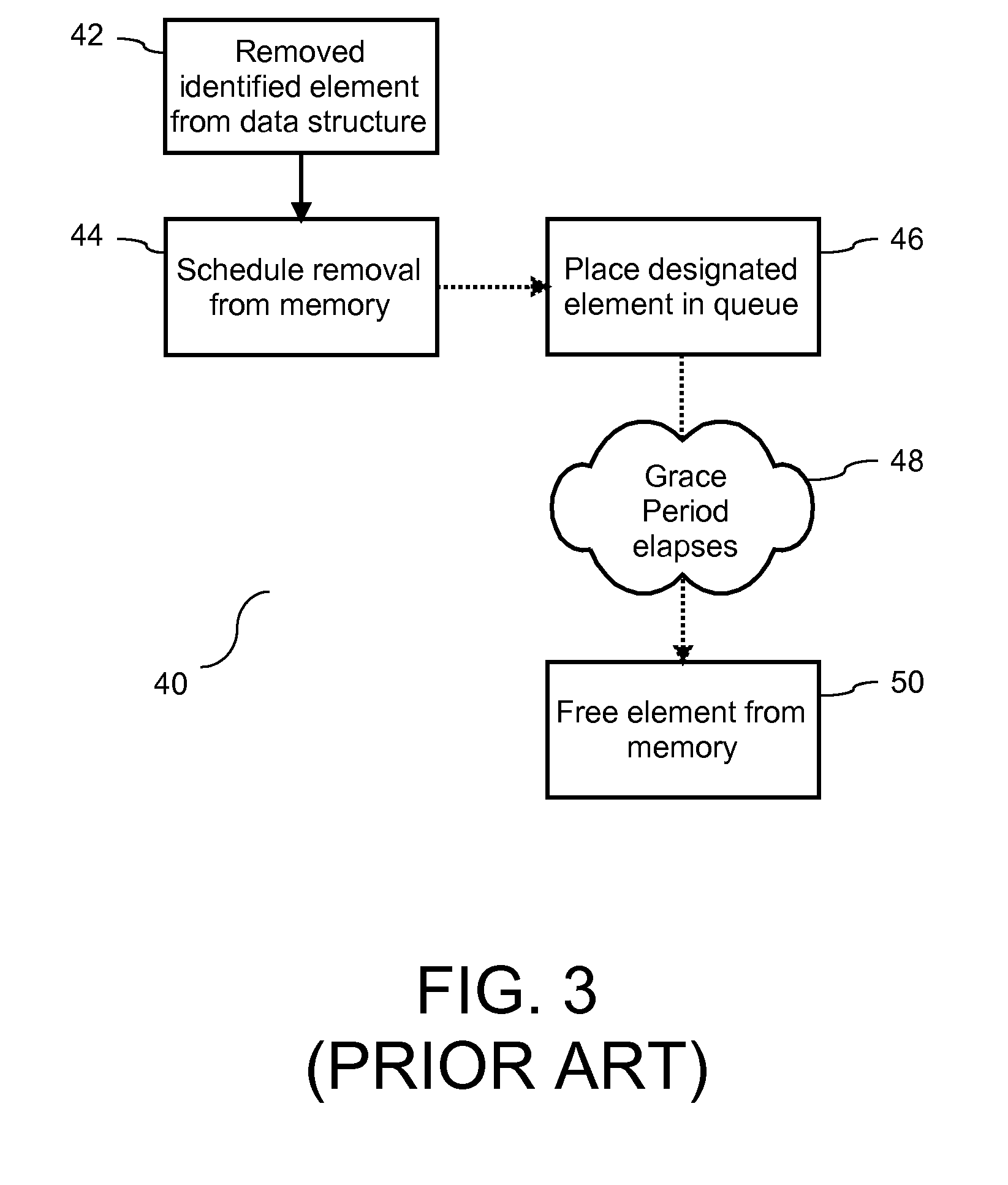Adaptive Reader-Writer Lock
a reader-writer lock and adaptive technology, applied in the direction of program control, multi-programming arrangement, instruments, etc., can solve the problems of severe degrading performance, process synchronization, undesired memory contention, etc., and achieve the effect of efficient operating mod
- Summary
- Abstract
- Description
- Claims
- Application Information
AI Technical Summary
Benefits of technology
Problems solved by technology
Method used
Image
Examples
Embodiment Construction
Overview
[0030]Maintaining low lock contention is essential to attaining high performance in parallel programs. However, even programs with negligible lock contention can suffer severe performance degradation due to memory latencies incurred when accessing shared data that is frequently modified. This is due to the high cost of memory latency compared to instruction execution overheads. Memory latencies are incurred for shared data structures in addition to the locks themselves. Accordingly, it is desirable and efficient to operate in different locking modes under differing levels of operation.
Technical Details
[0031]It has been ascertained that there are essentially three desirable forms of locking modes or primitives that provide efficient modes of operation for differing levels of contention, two formations of a reader-writer lock mode, and one form of an exclusive lock. Although there are many locking primitives which have been developed and maintained, these three primitives prov...
PUM
 Login to View More
Login to View More Abstract
Description
Claims
Application Information
 Login to View More
Login to View More - R&D
- Intellectual Property
- Life Sciences
- Materials
- Tech Scout
- Unparalleled Data Quality
- Higher Quality Content
- 60% Fewer Hallucinations
Browse by: Latest US Patents, China's latest patents, Technical Efficacy Thesaurus, Application Domain, Technology Topic, Popular Technical Reports.
© 2025 PatSnap. All rights reserved.Legal|Privacy policy|Modern Slavery Act Transparency Statement|Sitemap|About US| Contact US: help@patsnap.com



